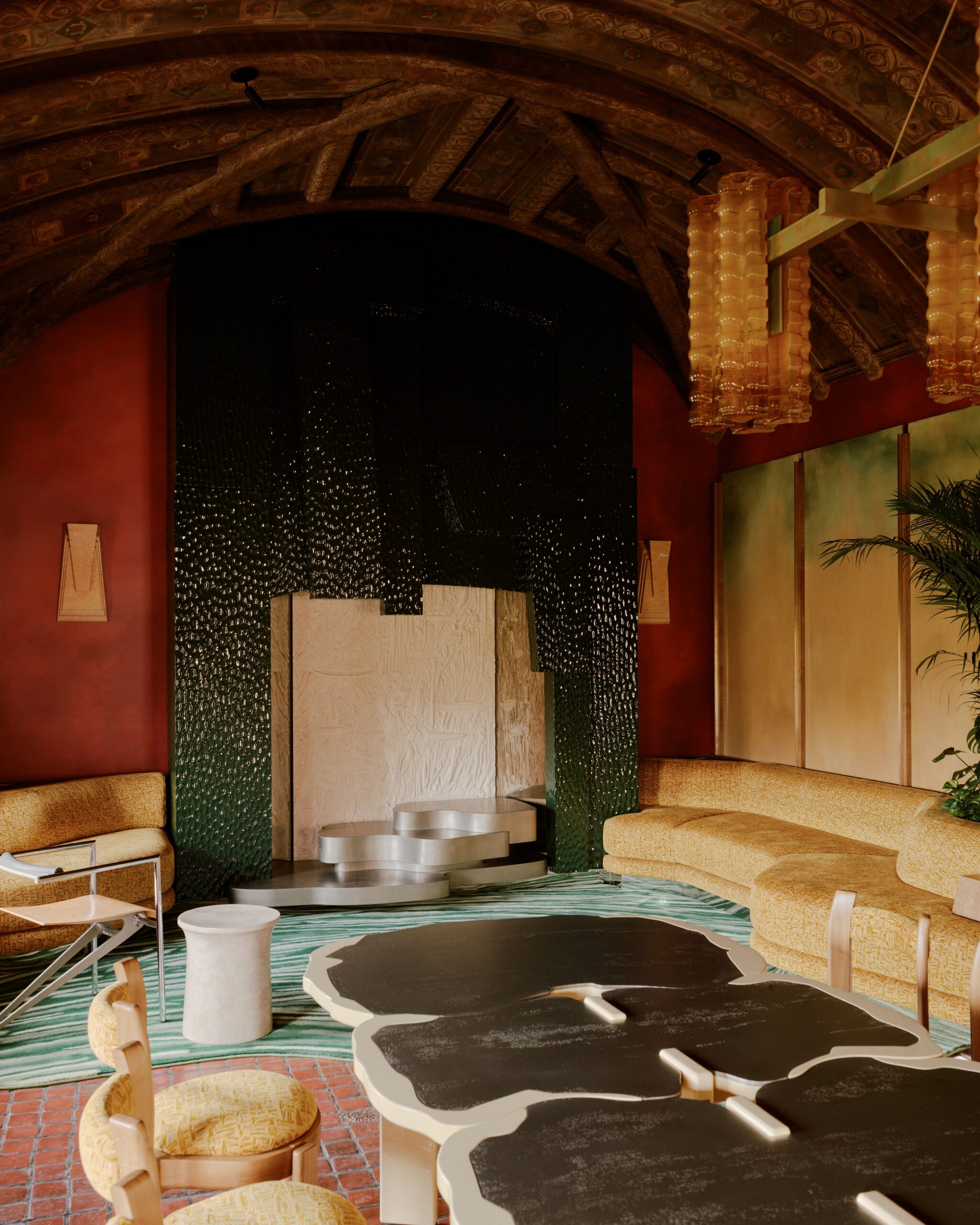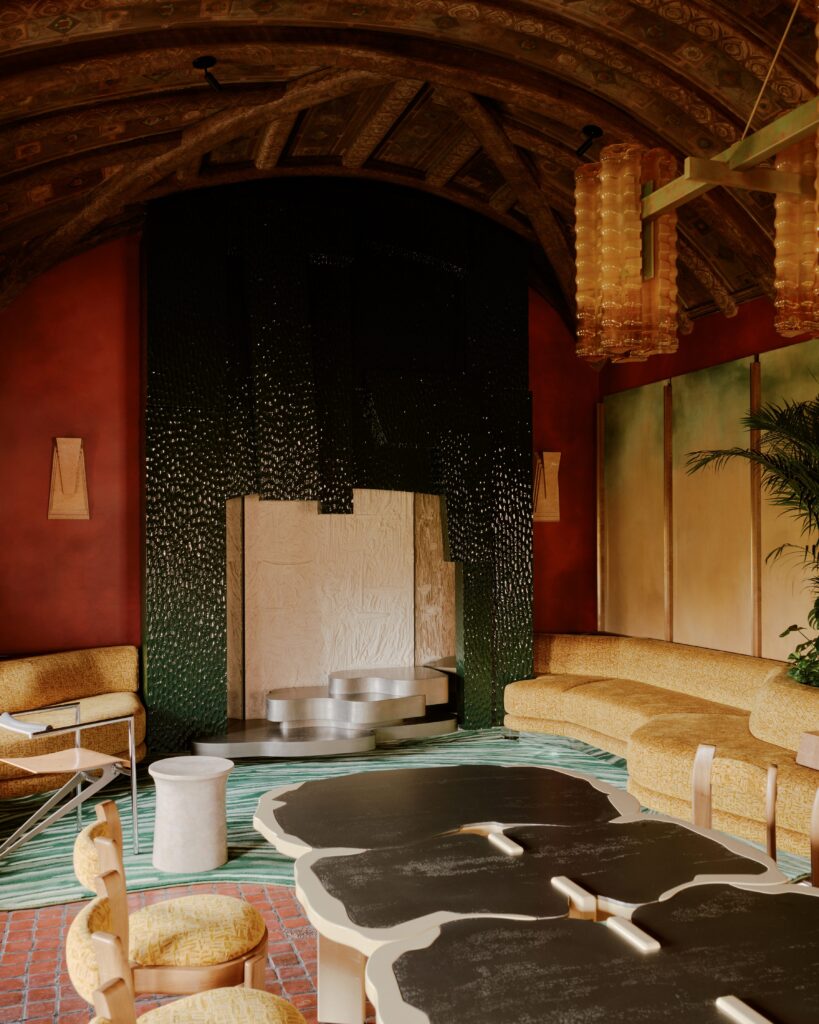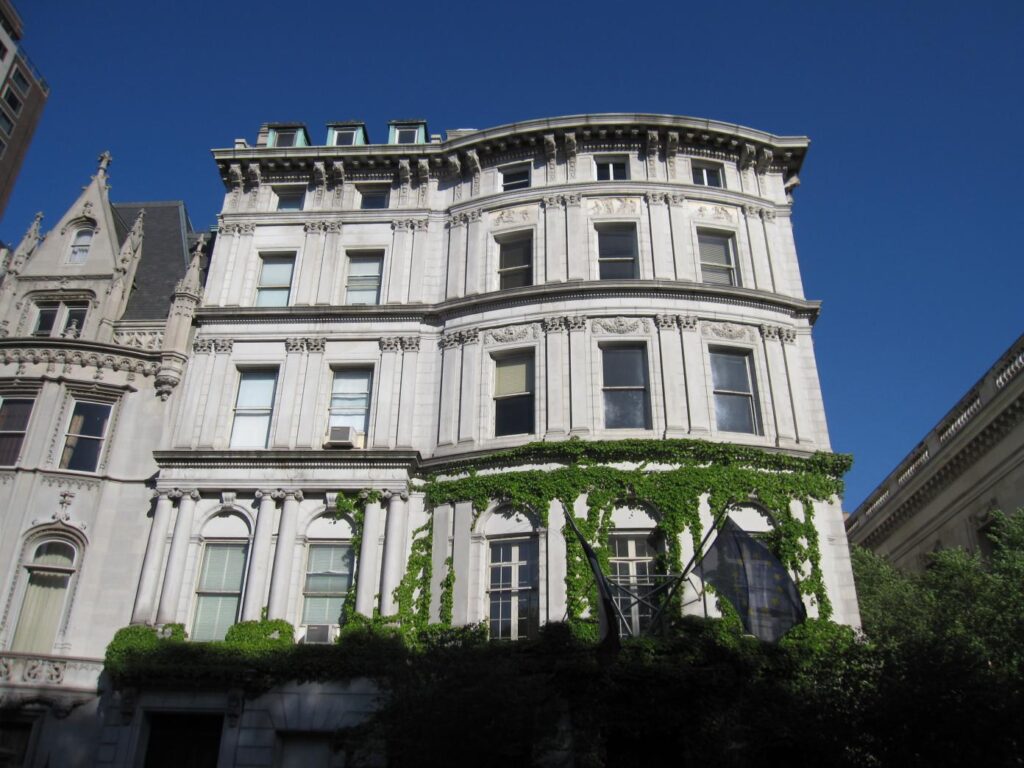Villa Albertine unveils Hugo Toro-designed studio in New York City Gilded Age headquarters, the landmark Payne Whitney Mansion

Villa Albertine's Atelier
New York, September 21 2023 — Villa Albertine, a cultural institution that supports artistic and intellectual exchanges between the US, France, and beyond, today announced the opening of the Villa Albertine Atelier, a new space for international creatives on the fifth floor of its Fifth Avenue headquarters, the landmarked Payne Whitney Mansion. The space was officially inaugurated by French Minister for Europe and Foreign Affairs Catherine Colonna at a ceremony last night.
Hugo Toro, one of France’s most promising up-and-coming designers, was selected through a competitive jury process to redesign the Villa Albertine Atelier, which looks over Central Park and formerly served as the writing workshop and salon of American poet, children’s author, and philanthropist Helen Hay Whitney (1875–1944). The space was reappointed with exquisite French contemporary design in sumptuous green and gold hues by Hugo Toro. The Villa Albertine Atelier will host artist dialogues, site-specific installations, and exclusive events that complement Villa Albertine’s exploratory artist residency program, which invites 50+ international creatives annually to the US to enrich their diverse practices and promote cross-cultural exchange.
The restoration and design of the Atelier were made possible thanks to the generous support of the Florence Gould Foundation.
“The Payne Whitney Mansion, Villa Albertine’s New York City home and already an architectural masterpiece of the Gilded Age, is now also a living monument and celebration of the best of French decorative arts, from the oldest traditions to the most contemporary approaches. Hugo Toro’s project is exceptional in every respect—his brilliant vision of bringing Central Park in from the outside, of re-establishing the spirit of Helen Hay Whitney in this building that had forgotten her, and of entrusting his designs to the finest French craftsmen—he has delivered a unique and already iconic space. The Atelier, the latest stage in a major collaboration between Villa Albertine and Mobilier National, will be the starting point for new initiatives to support design and craftsmanship at an unprecedented scale,” said Gaëtan Bruel, Director of Villa Albertine.
“I am very happy, on the occasion of this first New York project, to have been able to contribute to the rehabilitation of a place steeped in history. Villa Albertine is a showcase of French cultural expertise. It is a place of creative abundance,” said designer Hugo Toro. “I wanted to weave an architectural metaphor around water, inspired by the poem “My Brook” by Helen Hay Whitney, the first artist to occupy the space. The four words that guided me in designing this place, where every detail is carefully considered, are authenticity, French expertise, creativity, and French eclecticism. It is intended to be anchored in time and in the memories of the visitors and users of the space.”
The Villa Albertine Atelier includes a restored, ornate painted wooden ceiling and floor tiled in tomettes. Hugo Toro’s design is a showcase of French savoir-faire and an homage to Helen Hay Whitney, a prominent author of children’s books and poet whose work was frequently published in Harper’s Magazine and The Metropolitan Magazine. Toro drew particular inspiration for the color, ornamentation, and materials in the design from Whitney’s poem “My Brook,” the text of which is displayed on a bronze plaque at the entrance to the Atelier.
The redesign of the Villa Albertine Atelier began with an extensive restoration of the space’s historic design elements completed by Cinzia Pasquali, founder of Atelier Arcanes, who has worked on monumental projects at the Louvre and the Palace of Versailles. Her work on the Villa Albertine Atelier included restoring the Renaissance-inspired painting decorations on the studio’s vaulted ceiling and the glazed brick-colored terra cotta tiles on the floor.
The restoration was followed by the redesign by Hugo Toro (b. 1989), an architect and interior designer from the east of France with dual Mexican and French nationality. He holds masters degrees in architecture from both Los Angeles and Vienna, as well as a degree in interior design from the Penninghen school in Paris, where he graduated at the top of his class.
A Historic Commitment to Contemporary French Design
The Villa Albertine Atelier redesign is a part of the institution’s ongoing partnership with the Mobilier National, one of the foremost French cultural institutions which for over four centuries has been in charge of furnishing the official spaces of the French Republic, ensuring the conservation of its historic collection of decorative art, and preserving the country’s history of design and fabrication.
The United States is the world leader in design, and the foremost export market for French craft and design. Embracing this fact, in 2023 Villa Albertine and the Mobilier National, with the support of the Bettencourt Schueller Foundation, are strengthening their partnership and mutual commitment to supporting French design excellence in the US, centered on four objectives:
- Support French designers and artisans’ growth in the US, both professionally and in terms of creative inspiration
- Strengthen the visibility of French designers and artisans already based in the US
- Promote long term, reciprocal exchanges between the French and American design scenes, in particular by building connections between design schools and increasing opportunities for American designers in France
- Contribute, in this Franco-American framework, to the emergence of a new generation of creatives and industry leaders who will amplify reflections on the role and potential for craft and design in the challenges society faces today
To achieve these objectives, in addition to the inauguration of the Atelier, Villa Albertine and the Mobilier National have launched several important initiatives. This includes OuiDesign!, a new support for New York galleries and venues who welcome designers for individual or collective exhibitions as part of OuiDesign! week, organized during NYCxDesign week. It also includes new programs for international workshop and factory visits, meetings with professionals and major institutions in the sector, and opportunities for short, medium, or long-term exploratory residencies in French workshops and factories for American designers, architects, and interior designers and American institutions.
Restoring One of New York City’s Only Remaining Gilded Age Mansions
The inauguration of the Villa Albertine Atelier marks the apex of the restoration of Villa Albertine’s headquarters, the historic Payne Whitney Mansion, which began 2018. The original setting for the Venetian Room, designed by Stanford White in 1906 and dismantled in 1949, was fully restored in its original location, on the ground floor of the building behind the reception rotunda. In 2019, additional structural improvements were undertaken on the higher floors of the building, as well as the restoration and refurbishing of spaces on the second floor (the Marble Room, the Ballroom and the Grand Staircase), which were completed in 2022.
The mansion was originally designed by Stanford White of McKim, Mead & White, among the most sought-after architectural firms of the Gilded Age. Completed in 1909, the mansion is steeped in the history of turn-of-the-century New York, Renaissance Europe, and France. The building was acquired by France in 1952 and now serves as a lively home for contemporary French creation in every artistic discipline, hosting thousands of visitors annually for free public programming including talks and book launches.

Villa Albertine’s Atelier

Payne Whitney Mansion
About Hugo Toro
Hugo Toro’s interest in architecture and design began as a child. Born to a French father and a Mexican mother, he spent his early years in eastern France. From this rich genealogy with its multiple roots, he has retained a taste for travel, a sensitivity to the world and a particular attraction to objects inherited from his mother.
These early interests and creative experiences nurtured his vocation and led him to enter the Penninghen school of interior architecture in Paris, from which he graduated top of his class. In addition to this master’s degree, he studied at the Angewandte Kunst University in Vienna and the University of California Los Angeles, focusing on conceptual architecture and digital tools.
Transversality and multidisciplinarity are the hallmarks of Hugo Toro’s work. This hard-nosed creative is committed to creating a global universe for each project, and to treating each concept in its entirety.
He takes an absolute approach to creation that is expressed in a wide range of media: painting, textile design, object design, jewelry, tableware, etc. In 2022, Hugo Toro presented his first furniture collection called Amanecer – the dawn -, published by the Parisian gallery Kolkhoze and M Editions and previewed at Christie’s.
Hugo Toro’s architectural design is guided by narrative, memory and anchoring.
His nomadic sensibility comes from his multiple origins, from Mexico, which he lives subliminally with his mother, and from the many journeys he makes and records in notebooks.
The richness of the materials, the strength of the colors, the sense of contrast and the sublimation of light are all structuring principles of Hugo Toro’s work. The aim is to create warm, atmospheric spaces.
At the heart of his agency’s artistic approach is the search for ambitious projects, shared experiences, and expressive spaces. Rather than choosing a particular type of space, Hugo Toro is above all guided by an obvious curiosity and eclecticism, which leads him to invest in restaurants, hotels and private flats all around the word.
hugotoro.com
